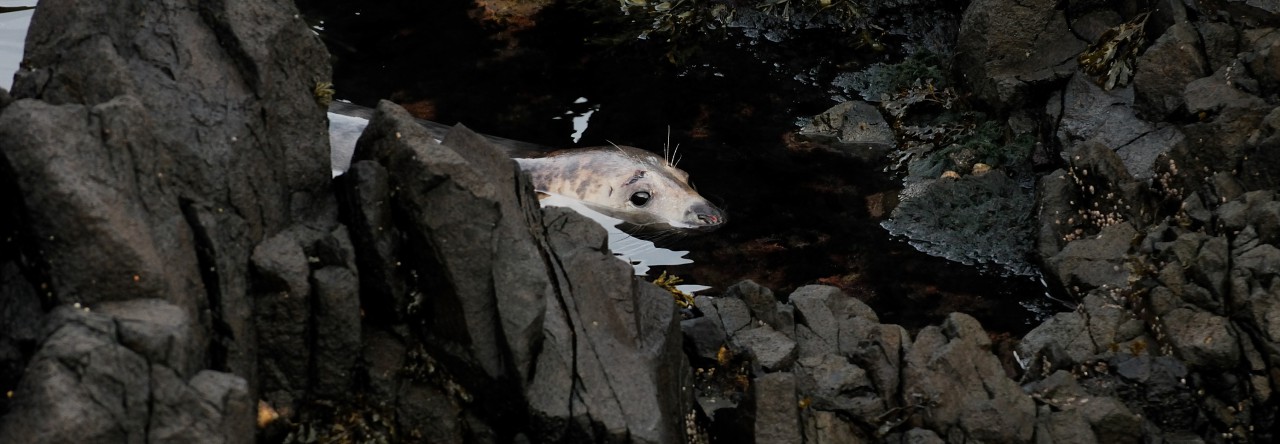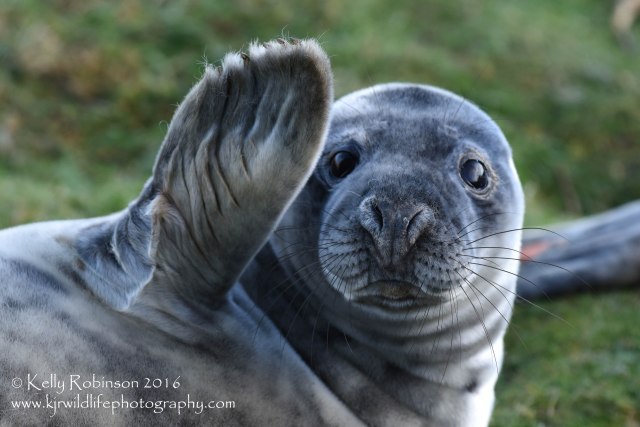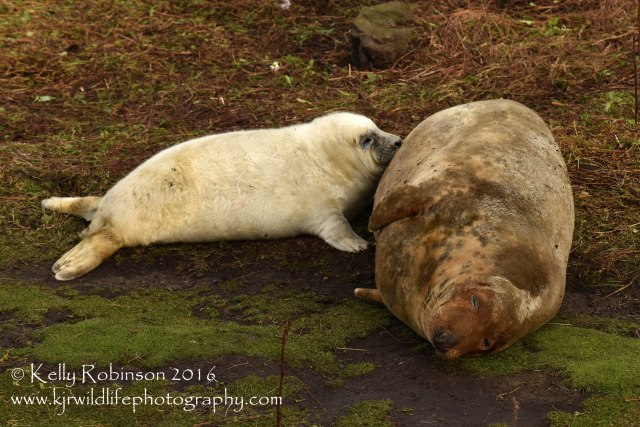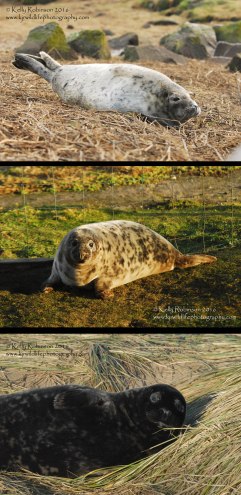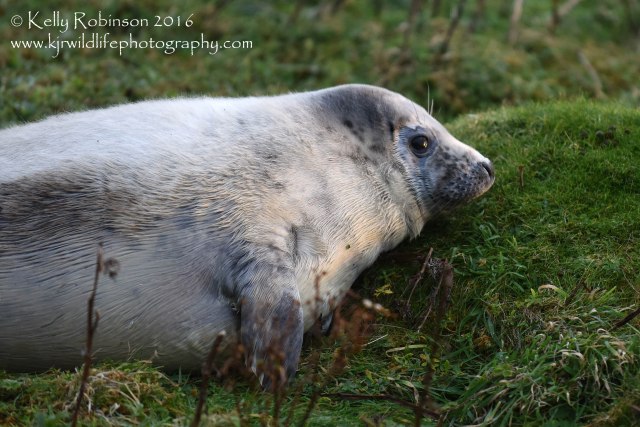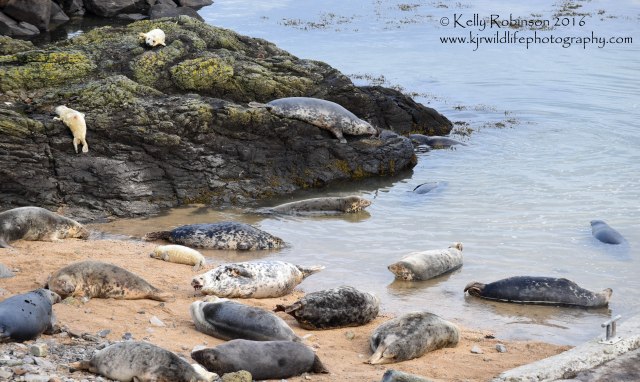
It’s currently my favourite time of year on grey seal breeding colonies, when the weaned pups (weaners) start to out number the adults on the island. I do enjoy watching the huge variety of behaviour the adults display, from the caring maternal behaviour mothers exhibit to the impressive battles males fight for access to females, but the weaners are without a doubt my favourite. This is because they typically spend several weeks on the island after weaning in a post-weaning fast, where they stay on the breeding colony despite there being no food for them, and they usually spend this time playing and exploring their surroundings. They can be very curious, and some will even come right up to you when you’re hiding in the colony to see what you are, play with youre belongings or even fall asleep on you!

Post weaning fasts are common in Phocid (true seal) seal species around the world, from the huge elephant seals to the two species we get in the UK, grey and harbour seals. No one really knows conclusively why weaners stay on the breeding colony for several weeks after their mothers wean them, although there are lots of theories. Grey seal pups can lose half a kilogram of mass every day they remain on the colony after weaning, and as having large amounts of blubber increases the chances that the pup will survive it’s first year of life, it seems very strange that pups stay on the island rather than go to sea to learn to forage and catch fish. However, there is evidence that during the post weaning fast, pups undergo physiological changes which prepare them for going to sea for the first time, so they can hold their breath and perform deep dives so they can catch fish successfully. In grey seal pups, the amount of oxygen they can store in their blood increases during the post weaning fast due to changes in the volume of blood they have and its components, with increases in substances such as hemoglobin that bind oxygen. The more oxygen a pup can store in it’s blood before it dives, the longer it can hold it’s breath and forage underwater, and in theory the more successful at catching fish it will be.

There are still many unanswered questions about the post weaning fast phocid seal pups go through and what happens once weaners leave the colony for the first time. To try and answer some of these questions, one of the senior scientists (Dr Sean Twiss of Durham University) here on the Isle of May is currently looking for a PhD student to investigate “Patterns of individual variation in post-weaning behvaiour in wild grey seals“, and the project is being co-supervised by my boss, PHATS team leader Dr Kimberley Bennett of Abertay University! The deadline for applicants is the 20th January 2017, and if you are interested, the details of the project and how to apply are found here. Whoever gets the PhD will get to come out to the Isle of May next year and will meet me and the rest of the PHATS team! Matt Carter of Plymouth University, another PhD student that Dr Bennett co-supervises, is also currently investigating the development of foraging behaviour in pups leaving breeding colonies, so hopefully in the coming years we will gain a much better understanding of the factors driving weaner behaviour before and after they go to sea for the first time.


In the lab here on the island the PHATS project is just over halfway to completion this year. As it gets later in the breeding season we are getting more and more study weaners to keep an eye on, although some of the first weaners that we included in our study are approaching the time when they may go to sea for the first time, at about a month of age. Charlie is now 35 days old and much leaner than when she first weaned from her mother 17 days ago, having lost 9.6kg across those 17 days. This seems like a lot, but considering she put on 22.2kg of blubber in the 18 days she was with her mother, she is still large enough to successfully go to sea. Kilo has now fully moulted and has a very distinct pattern of spots that we can identify him from. We also have a new study weaner (Oscar) that has moulted and turned out to be completely black!

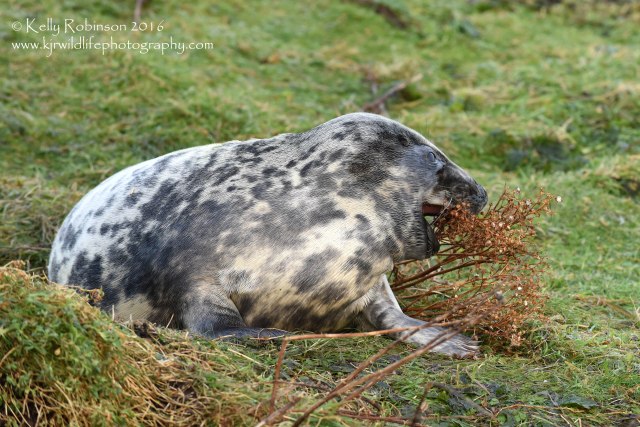
MEANWHILE away from the colony, it briefly got a little bit harder to escape from the seals as a female came right up outside our doorstep with her pup for the first time! She has thankfully moved on a little further from the house so we don’t disturb her, but it was a suprise to open the door one morning and find the pair of them staring at us!
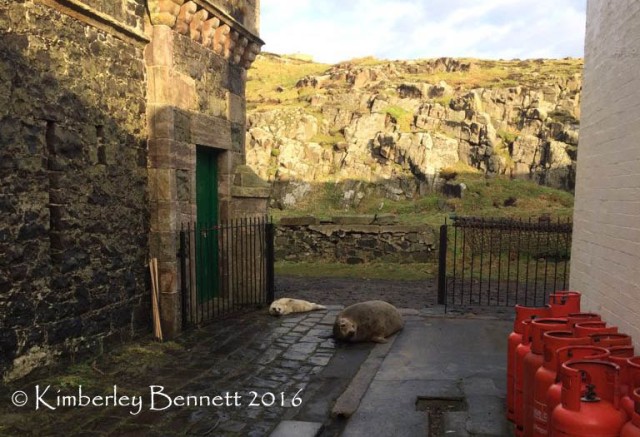
Sadly two members of the research team here have had to leave the island in the last week, Dr Twiss and Dr Bennett both had to return to the mainland to resume their teaching duties at their universities. They will be missed, and it marks the beginning of the end of the field season as the majority of the researchers here will also leave in the coming week. The PHATS team will stick it out until mid December, but it’s always sad to see people go!
Finally if you’d like to see Dr Bennett talking about seals or the PHATS project, she will be giving some public presentations in the coming weeks in Scotland:
6pm, Tuesday the 13th December at the D’Arcy Thompson Zoology museum at Dundee University: Public talk on seal biology
10.00-16.30, Wednesday the 14th December in the Ninth Scottish Symposium on Environmental Analytical Chemistry at the Dalhousie Building, Dundee University: presentation of persistent organic pollutant findings from the PHATS project

